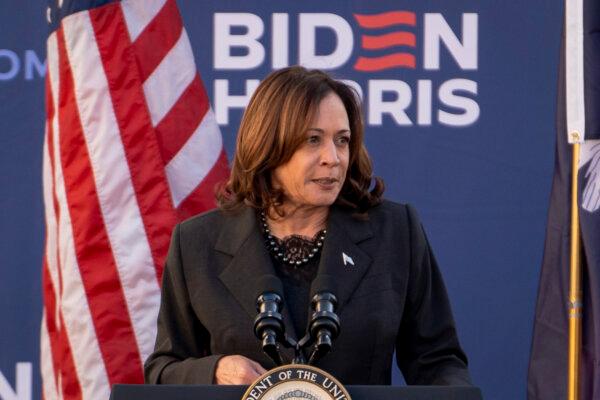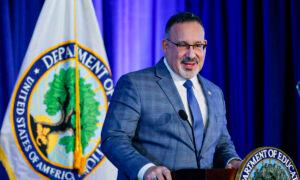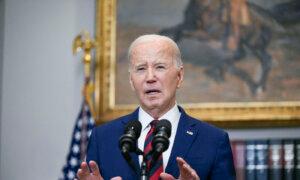Total cost of the SAVE Plan is $559 billion.
According to the University of Pennsylvania’s Penn Wharton Budget Model (PWBM), attached to the White House’s five provisions in the recently announced initiative is an $84 billion price tag. In total, the final 10-year bill would be approximately $559 billion.
The new plans are projected to help as many as 30 million borrowers, a White House fact sheet claims. The revised package will contain several measures to help these individuals.
“Too many borrowers eligible for relief—including immediate cancellation—have not been able to overcome paperwork requirements, bad advice, or other obstacles. Since its first days in office, the Biden-Harris Administration has worked to get borrowers the relief to which they are entitled,” the White House said in a statement on April 8.
U.S. officials propose eliminating runaway interest accrued up to $20,000, a program the PWBM estimates would cost nearly $58 billion.
The administration plans to discharge balances in the repayment stage for 20 years. This is expected to cost more than $19 billion.
Under the latest announcement, the federal government would assist borrowers who experience hardship in repaying loans, which could cost about $7.2 billion.
Additionally, the administration intends to eradicate student debt for borrowers eligible for but not yet receiving specific forgiveness plans, such as people in public service who have been paying their student loans for 10 years or more. The White House also wants to help borrowers enrolled in low-financial-value programs or schools.
These figures were not calculated in the Penn Wharton analysis because there was a lack of information on how the two programs would operate.
Many provisions are already in the SAVE plan introduced last year, with much of the aid concentrated on individual or household income.
“The New Plans will also relieve some longer-term student debt for about 750,000 households making over $312,000 in average household income,” PWBM stated. “The main reason for this high average household income is that the SAVE plan already provides long-term debt relief to households with lower incomes.”
Influencing the Youth Vote
Despite these plans typically helping young people, the latest polls show that younger voters are shifting to former President Donald Trump, while older voters support the incumbent.
Conservative Opposition to the SAVE Plan
A coalition of seven Republican-led states is suing to block the administration’s SAVE Plan.
“This is not a student loan program. It is a grant program that Congress never authorized,” the suit states.
“When students don’t have to pay back the money they borrow to pay for college, colleges don’t have any reason to keep prices low. On the contrary, some students will necessarily benefit from paying and borrowing as much as possible,” said Beth Akers, a senior fellow at the American Enterprise Institute (AEI).
Many economists have warned that student loan debt relief is regressive, meaning that it benefits wealthy graduates.
In the past, President Biden noted that he did not want taxpayers to pay for the student loans of Harvard, Penn, or Yale graduates.

“If you’ve paid undergrad loans for 20-plus years or graduate loans for 25 or more years, your loans will be completely forgiven, regardless of your income and even if you did not graduate,” Ms. Harris said.
“The Biden-Harris Administration won’t stop fighting to provide support and relief to borrowers across the country—no matter how many times Republican elected officials try to stop us,” the department said.
The latest court pursuit does not target the new student loan efforts but could foreshadow another legal case.
The multi-state legal challenge comes after the Supreme Court rejected President Biden’s $400 billion plan to abolish or reduce federal student loan debts for millions of Americans in June 2023.
X Spat
House Republicans took to X, formerly Twitter, and wrote, “Taxpayers shouldn’t be forced to foot the bill for Joe Biden’s illegal student loan bailout scam.”
“This you?” the post said.
During the coronavirus pandemic, the U.S. government launched PPP and allowed borrowers to be eligible for forgiveness if the money was used to keep workers employed and business-related payments, like mortgage interest, rent, and utilities.
Original News Source Link – Epoch Times
Running For Office? Conservative Campaign Consulting – Election Day Strategies!


